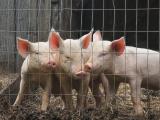Dec 10, 2009
Flu response frays state, local public health
Responding to the H1N1 pandemic has stretched some already financially strapped public health departments to the point of pulling back in other areas such as testing for other infectious diseases and doing restaurant inspections, the Wall Street Journal reported today. For example, public health nurses in Maine have had to limit home visits only to major health threats. Both the House and Senate health reform bills contain new funds to strengthen public health infrastructure.
http://online.wsj.com/article/SB126040312087583889.html
Dec 10 Wall Street Journal report
Return from break prompts flu rise at colleges
After weeks of decline, flu activity increased at US colleges last week, and the American College Health Association (ACHA) attributes the uptick to students returning to campus after Thanksgiving break, the group said in an update yesterday. New cases were up 27% from the week before. The attack rate for the week ending Dec 4 was 5.2 cases per 10,000 students. No new deaths were reported. The percentage of students who have received the pandemic vaccine is still only 5%.
http://www.acha.org/ILI_Surveillance.cfm/?date=121009
ACHA report for week ending Dec 4
Review finds high death rates in native groups
Native Americans and Alaska Natives are four times more likely to die of pandemic H1N1 than any other group, officials reported today in Morbidity and Mortality Weekly Report (MMWR). The review of flu deaths in 12 states could not explain why the flu strikes those groups harder, but the authors said reasons might include higher rates of chronic illnesses and socioeconomic conditions.
http://www.cdc.gov/mmwr/preview/mmwrhtml/mm5848a1.htm?s_cid=mm5848a1_e
Dec 11 MMWR report
North Korea to accept flu drugs from South
A South Korean cabinet minister said today that North Korea has agreed to accept aid in the form of oseltamivir to fight an H1N1 outbreak, the Associated Press (AP) reported. North Korean state media reported yesterday that the country had nine H1N1 cases. A spokesman for the South Korean minister said Seoul would send enough oseltamivir to treat 500,000 people. South Korea's oseltamivir offer was its first offer of humanitarian aid since President Lee Myung-bak took office in early 2008.
http://www.wtop.com:80/?nid=105&sid=1833412
Dec 10 AP story
China reports clinical features of early cases
A report on the clinical features of 426 early H1N1 cases in China was published yesterday in the New England Journal of Medicine. The patients, about a third of whom were identified at ports of entry, were isolated in 61 hospitals. Most had a mild illness, and about 60% received early oseltamivir treatment. Their mean age was 23, and the median incubation period was 2 days, with a range of 1 to7 days. The median period of viral shedding, as indicated by lab testing, was 6 days.
http://content.nejm.org/cgi/content/full/NEJMoa0906612
Dec 9 N Engl J Med report
Israel to send vaccine to Gaza Strip
Israeli authorities today promised to send 30,000 to 40,000 doses of H1N1 vaccine to the Gaza Strip, where six people have died of the virus in the past 5 days, Agence France-Presse (AFP) reported. The doses were supplied by the World Health Organization, said Col. Moshe Levy, head of the Israeli liaison office for Gaza. Israel previously provided 10,000 doses to the Palestinian territory.
http://www.france24.com/en/node/4944971
Dec 10 AFP story
Early Mexican surveillance found two infected pigs
Veterinary officials in Mexico today said that they detected the pandemic virus in two pigs at a farm in Queretaro state in late April after the virus was first confirmed in humans, according to a report from the World Organization for Animal Health (OIE). The farm had 360 pigs at the time. The infections were found during enhanced surveillance at pig farms throughout Mexico. Regular testing at the affected and surrounding farms has found no other cases.
http://www.oie.int/wahis/reports/en_imm_0000008741_20091210_112533.pdf
Dec 10 OIE report
Cheetah at California preserve had H1N1
The owner of a wildlife preserve near Santa Barbara said a pandemic H1N1 infection was detected recently in an 8-year-old cheetah after the animal was coughing and showing other flu symptoms, the Press Democrat reported. She believes the animal contracted the virus from a sick animal handler, not from the public. The cat has recovered. The case appears to be the first in an exotic animal and appears to be the one mentioned in a Nov 30 US Department of Agriculture report.
http://www.pressdemocrat.com/article/20091209/ARTICLES/912099922/0/LIFESTYLE09
Dec 9 Press Democrat report


















